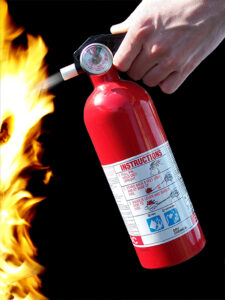BE INFORMED • MAKE A PLAN • MAKE A KIT
BE INFORMED
- Register with Aware & Prepare (a community alert service to keep you informed on what matters most…used by law enforcement personnel and government agencies)
- Register for REVERSE 911 to receive Aware and Prepare Emergency Notifications
- Know basic first aid
- Know emergency shelter locations for your area and evacuation routes
MAKE A PLAN
(AND DISCUSS/PRACTICE WITH YOUR FAMILY)
- Choose two places to meet (outside home, outside neighborhood)
- Choose an out–of–area contact person
- Know evacuation routes—practice using them
- Consider pets…they depend on you
- ICE (In Case of Emergency list) for wallet & cell phone
MAKE A KIT
- Water: 1 gallon/person/day
- Food: canned non-perishables for pets and people
- Flashlight/radios (crank or battery) and extra batteries
- First aid kit
- Medications
- Multi-purpose tool (e.g. Leatherman)
- Sanitation & personal hygiene items
- Copies of personal documents
- Solar charger (for phone/laptops)
- Family emergency contact list
- Cash (small bills)
- Sturdy shoes
- Sturdy gloves
- N95 surgical mask/gloves
- Large/small zip lock bags for sanitation and other uses
- Extra Rx eyeglasses
- Pet supplies (leashes/kennels)
- Keys for home/vehicles
- Manual can opener
- Duct tape
- Household bleach
- Matches
- Sweatshirts/sleeping bags
- Whistle
More Info
THE ABCS OF FIRE EXTINGUISHERS
Whether you have ever had to use one or (hopefully) not, a fire extinguisher is a must have for all homes (along with smoke and carbon monoxide [Co2] detectors). Actually, at a minimum, you should have one on every floor, particularly in the kitchen, laundry area, and garage. What to buy? Here’s a brief guide.
All fire extinguishers (about $20–80 for home models) come with labels denoting which type of fire they are designed for. Those for Class A fires (ordinary combustibles like paper, wood, textiles, and plastics) contain pressurized water; those for Class B fires (flammable liquids like gasoline, oil, kitchen grease, paint, and alcohol); and Class C fires (electrical) contain carbon dioxide. Using the wrong extinguisher can make things worse—spraying water on an electrical fire, for instance, can cause an electrical shock to the user. Multipurpose extinguishers (labeled ABC) contain dry chemicals that combat all types of home fires and are good options for most areas—though the best choice for the kitchen is one labeled BC. Newer models also have pictures showing the type of fire they will extinguish.
Fire extinguishers come with numbers representing their fire-fighting capacity. A higher number indicates that the extinguisher will put out a bigger fire before running out—but also means that it is bigger and heavier, and so may be harder to lift (home models weight 5–20 pounds). The C models have no number rating.
The extinguisher should have a label from one of the nationally recognized testing laboratories, showing that it meets safety and performance standards. These include UL (Underwriters Laboratories), ETL (from Intertek), CSA (formerly the Canadian Standards Association), and FM (Factory Mutual).
Familiarize yourself with how to use your fire extinguishers before that might be necessary. Follow all maintenance instructions provided by the manufacturer, including regularly checking that they are properly pressurized.
Fire extinguishers are either rechargeable or for single use. They don’t come with expiration dates, but it is recognized that you replace unused, non-rechargeable ones twelve years after the date of manufacture. Rechargeable models should be regularly serviced or replaced if parts are damaged or if there is a slow leak.
To use, think PASS:
Pull (pull the pin to unlock the nozzle)
Aim (point the nuzzle at the base of the fire)
Squeeze (squeeze the handle slowly and evenly)
Sweep (from side to side)
Aerosol fire extinguishers—which look like big cans of bug spray—are easier to store and use, but they don’t rate highly in expert testing and are not a substitute for regular extinguishers.
CAUTION
Use a fire extinguisher only if the fire is small enough to contain, making sure there is a safe fire exit at your back, should the fire start to get out of control. Otherwise, leave immediately and call 911. If you use an extinguisher, be sure the fire is completely out.
